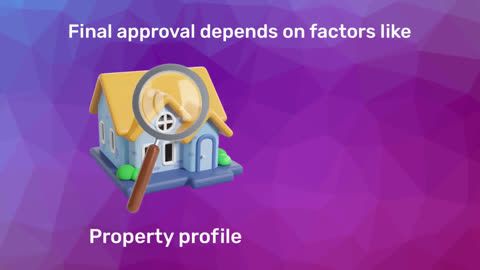Understanding the role of a guarantor
A guarantor is someone who takes on the responsibility of repaying the loan if the primary borrower defaults. This means that if you agree to be a guarantor for someone’s home loan, you are not just making a promise—you are legally bound to pay off the debt if the borrower cannot.Banks and financial institutions often require guarantors for home loans when the borrower’s credit score is not strong, or when the loan amount is high. A guarantor’s financial standing and creditworthiness can influence the loan approval.
Can a guarantor withdraw his guarantee?
Now, the big question is: Can a guarantor withdraw his guarantee for a home loan? The short answer is, yes, but it is not simple. Withdrawing from this obligation requires meeting certain conditions and following a proper legal process. Let us look at the details:1. Get consent from the lender: To withdraw your guarantee, you need to seek approval from the lending bank or financial institution. They have to agree to release you from the guarantee since it changes the risk profile of the loan.
2. Find a replacement guarantor: Lenders usually require a replacement guarantor if the original one wishes to withdraw. The replacement must have the same or better financial standing and creditworthiness as the previous guarantor.
3. Clear outstanding dues: If the borrower has missed any payments or there are outstanding dues, the lender may not allow the guarantor to withdraw until the dues are cleared.
4. Legal process: After the lender’s consent, a legal procedure follows, which includes signing documents to release you from the guarantee. This ensures that you are no longer held responsible for the home loan.
5. Implications of withdrawal: Withdrawing as a guarantor could impact the borrower’s ability to continue the loan, especially if they do not have a strong credit history. The lender might ask the borrower to provide additional collateral or increase the interest rate.
Challenges in withdrawing as a guarantor
While it is possible to withdraw, it is not without challenges. Here are some common hurdles:- Lender resistance: Lenders are usually reluctant to release a guarantor unless there is a compelling reason, as it reduces their security.
- Credit impact on borrower: Withdrawal may affect the borrower’s credit profile, making it difficult for them to continue with the existing loan or obtain new credit.
- Legal complications: The legal process of removing a guarantor can be time-consuming and may require professional legal help.
Steps to follow if you want to withdraw as a guarantor
If you want to withdraw your guarantee for a home loan, here is a step-by-step guide:1. Communicate with the borrower: Discuss your decision with the borrower. Explain your reasons and help them find an alternative solution.
2. Contact the lender: Write a formal request to the lender, explaining your wish to withdraw as a guarantor. Attach necessary documents like proof of identity and relationship with the borrower.
3. Seek legal advice: It is wise to consult a lawyer to understand the legal implications of withdrawing as a guarantor.
4. Check for outstanding dues: Ensure the borrower has no outstanding dues, as this will be a prerequisite for your withdrawal.
5. Find a replacement: If possible, help the borrower find a replacement guarantor. This will ease the process with the lender.
6. Complete the legal process: Sign any necessary legal documents to formalise your withdrawal as a guarantor.
Why a guarantor might want to withdraw
There are several reasons why a home loan guarantor might want to withdraw:- Change in financial situation: If the guarantor’s financial situation changes, such as loss of income or increased liabilities, they may not want to be responsible for someone else’s debt.
- Health concerns: Serious health issues or unforeseen circumstances can make it difficult for a guarantor to fulfil their obligations.
- Relationship issues: Personal conflicts or deteriorating relationships between the borrower and guarantor can lead to withdrawal.
Tips for guarantors
Before agreeing to be a guarantor, here are some tips to keep in mind:1. Understand your liability: Know that as a guarantor, you are liable to pay the debt if the borrower fails to repay.
2. Check the borrower’s financial stability: Ensure that the borrower has a stable income and good credit history before agreeing.
3. Negotiate with the lender: If you want to add specific conditions or a timeframe to your guarantee, discuss it with the lender before signing.
4. Keep track of the loan: Regularly check the borrower’s repayment status to ensure that there are no missed payments.
5. Explore alternatives: Suggest other options like a secured loan or finding another guarantor if you are uncomfortable.
Explore Bajaj Housing Finance Home Loan
If you are looking for a home loan, Bajaj Housing Finance can be a smart option. With low interest rates, flexible repayment tenures, and a simple application process, Bajaj Housing Finance makes owning your dream home easy and affordable.Here are a few benefits of opting for a home loan with us:
1. High loan amount: Turn your dream of owning a home into reality with a home loan of up to Rs. 15 Crore*.
2. Low interest rates: Enjoy interest rates starting at just 7.45%* p.a, with EMIs as low as Rs. 684/lakh*.
3. Quick approval: Get your loan approved within 48 Hours* of application – sometimes even sooner.
4. Long repayment tenure: Repay your loan at ease with a flexible tenure of up to 32 years.
5. No foreclosure fee*: Individual borrowers opting for a floating interest rate can foreclose or prepay their loan at no extra charge.
6. Easy application: Skip the hassle with our doorstep document pick-up service, making the application process quick and simple.
7. Balance transfer facility: Transfer your existing home loan and enjoy a top-up loan.
Take the first step toward your dream home today. Apply now with Bajaj Housing Finance.
Ready to get started? Visit the Bajaj Finserv website and explore your options today.




